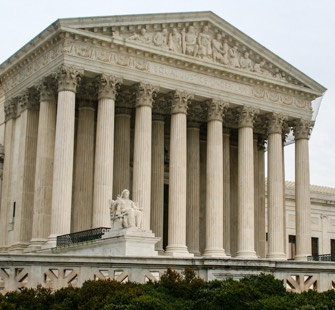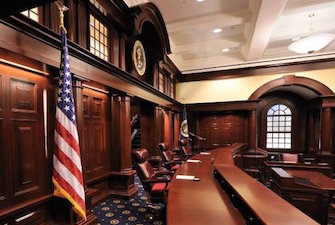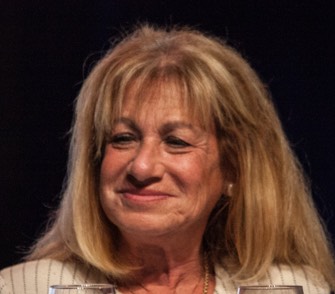SCOTUS takes Samsung appeal in Apple design patent infringement case
 On Monday, March 21, 2016, the United States Supreme Court agreed to hear the matter of Samsung Electronics v. Apple, Inc., a dispute between two giant technology companies that at its core relates to how much Samsung owes Apple for infringing certain design patents.
On Monday, March 21, 2016, the United States Supreme Court agreed to hear the matter of Samsung Electronics v. Apple, Inc., a dispute between two giant technology companies that at its core relates to how much Samsung owes Apple for infringing certain design patents.
So far, these two technology giants have shown little interest in playing nice. A jury found that Samsung infringed Apple design patents, Apple utility patents and also diluted Apple’s trade dresses. The infringed design patents are U.S. Design Patent Nos. D618,677 (“D’677 patent”), D593,087 (“D’087 patent”), and D604,305 (“D’305 patent”), which claim certain design elements embodied in Apple’s iPhone. The infringed utility patents are U.S. Patent Nos. 7,469,381 (“’381 patent”), 7,844,915 (“’915 patent”), and 7,864,163 (“’163 patent”), which claim certain features in the iPhone’s user interface. The diluted trade dresses are Trademark Registration No. 3,470,983 (“’983 trade dress”) and an unregistered trade dress defined in terms of certain elements in the configuration of the iPhone.
Federal Circuit Affirms District Court on Infringement and Definiteness in Dow Chemical Case
 On January 29, 2016, the United States Court of Appeals issued a decision in AKZO Nobel Coatings, Inc. v. Dow Chemical Company, relating to an appeal from the United States District Court for the District of Delaware.
On January 29, 2016, the United States Court of Appeals issued a decision in AKZO Nobel Coatings, Inc. v. Dow Chemical Company, relating to an appeal from the United States District Court for the District of Delaware.
Akzo appealed from the district court’s granting of summary judgment that Dow did not infringe the claims of U.S. Patent 6,767,956, either literally or under the doctrine of equivalents. Dow cross-appealed from the court’s conclusion that the claims of the ’956 patent are not indefinite.
Claim 1 of the ‘956 patent was deemed representative and reads as follows:
1. A process for producing a dispersion of a polymer in an aqueous medium in which the polymer is dispersed in an aqueous medium in an extruder at a temperature above 100° C. in an extruder having an outlet
wherein the pressure in the extruder is maintained above atmospheric so that the aqueous medium does not boil characterized by maintaining the pressure above atmospheric for the extruder at the outlet with a pressurized collection vessel and
wherein aqueous dispersion from the extruder has at least 25% by weight of the aqueous medium where the aqueous medium has less than 40% by weight of organic solvent and
wherein the aqueous dispersion enters the outlet and pressurized collection vessel at a pressure above atmospheric so that the aqueous medium does not boil and is subjected to the action of a cooling zone to lower the temperature of the aqueous dispersion to below 100° C. to have an aqueous dispersion with a viscosity below 10 Pa.s.
02.24.16 | Federal Circuit Cases, Patent Issues, Patent Litigation, posts | Gene Quinn
SCOTUS hears enhanced damages oral arguments February 23, 2016
 On Tuesday, February 23, 2016, the United States Supreme Court will hear oral arguments in Halo Electronics, Inc. v. Pulse Electronics, Inc. (14-1513) and Stryker Corporation v. Zimmer, Inc. (14-1520), which have been consolidated for appeal. These two cases will force the Court to dive into one of the most thorny patent litigation issues – the issue of enhanced damages for willful patent infringement.
On Tuesday, February 23, 2016, the United States Supreme Court will hear oral arguments in Halo Electronics, Inc. v. Pulse Electronics, Inc. (14-1513) and Stryker Corporation v. Zimmer, Inc. (14-1520), which have been consolidated for appeal. These two cases will force the Court to dive into one of the most thorny patent litigation issues – the issue of enhanced damages for willful patent infringement.
The statute in question says very little that is relevant, merely saying that the district court judge “may increase the damages up to three times the amount found or assessed.” 35 U.S.C. § 284. Simple and straightforward enough, but over the years the United States Court of Appeals for the Federal Circuit has issued rulings that make it virtually impossible for a victorious patent owner to ever receive enhanced damages. The rigid structure of the enhanced damages test has effectively removed the permissive and discretionary language of the statute, which just says that the district court judge “may increase the damages.”
In the Supreme Court’s recent decisions in Highmark Inc. v. Allcare Health Management Systems, Inc., 134 S. Ct. 1744 (2014) and Octane Fitness, LLC v. ICON Health & Fitness, Inc., 134 S. Ct. 1749 (2014) the Court, interpreting 35 U.S.C. § 285, found that there was no textual support in the statute to impose an onerous, rigid test for the awarding of attorneys’ fees to a prevailing party in a patent infringement lawsuit. Most notably, the Supreme Court explained to the Federal Circuit that they misinterpreted a key ruling of the Supreme Court when they created the test that would result in attorneys’ fees never being award. That same exact misinterpretation is at the heart of Federal Circuit case law relating to the awarding of enhanced damages to a victorious patent owner.
01.25.16 | Patent Damages, Patent Issues, Patent Litigation, posts, Supreme Court Cases | Gene Quinn
Litigation Funding in Uncertain Patent Eligibility Times
 A patent is an exclusive right. This means that the owner of a patent can prevent others from engaging in activities that are covered by an issued patent. But as is true with any right, a patent is only worth something if the owner is willing to take action to preserve the rights and litigate against those who are treading on the rights granted. In the United States, that means litigation in federal district court, which can easily cost millions of dollars.
A patent is an exclusive right. This means that the owner of a patent can prevent others from engaging in activities that are covered by an issued patent. But as is true with any right, a patent is only worth something if the owner is willing to take action to preserve the rights and litigate against those who are treading on the rights granted. In the United States, that means litigation in federal district court, which can easily cost millions of dollars.
Today, given the climate within the industry, being willing to take action when infringement is suspected is only the first hurdle. Yes, the decision to undertake litigation is a difficult one regardless of whether it is made by a company or an individual. Attention is diverted from other endeavors and opportunities, and there is a very real financial cost associated with litigating a dispute. Litigation is not free.
01.11.16 | Federal Circuit Cases, patent eligibility, Patent Issues, Patent Litigation, posts | Gene Quinn
Federal Circuit reverses damages award against Cisco Systems
 On December 28, 2015, the United States Court of Appeals for the Federal Circuit reversed a $63.7 million jury verdict against Cisco Systems. The Court, in an opinion by Chief Judge Prost (pictured), concluded that substantial evidence did not support the jury’s finding that Cisco’s devices, when used, perform the “running” step of the asserted claims.
On December 28, 2015, the United States Court of Appeals for the Federal Circuit reversed a $63.7 million jury verdict against Cisco Systems. The Court, in an opinion by Chief Judge Prost (pictured), concluded that substantial evidence did not support the jury’s finding that Cisco’s devices, when used, perform the “running” step of the asserted claims.
Commil owns U.S. Patent No. 6,430,395, which relates to a method of providing faster and more reliable handoffs of mobile devices from one base station to another as a mobile device moves throughout a network area. In 2007, Commil brought a patent infringement action against Cisco, which makes and sells wireless networking equipment. In a first jury trial, Commil alleged that Cisco directly infringed the ’395 patent by making and using networking equipment, and also that Cisco induced its customers to infringe by selling them the infringing equipment. The jury concluded that Commil’s patent was valid, that Cisco was liable for direct but not induced infringement, and awarded $3.7 million in damages. Commil then filed a motion for a new trial on induced infringement and damages, which the district court granted. The second jury concluded that Cisco was liable for induced infringement and awarded $63.7 million in damages.


No Comments
04.4.16 | patent infringement, Patent Issues, Patent Litigation, Supreme Court Cases | Gene Quinn